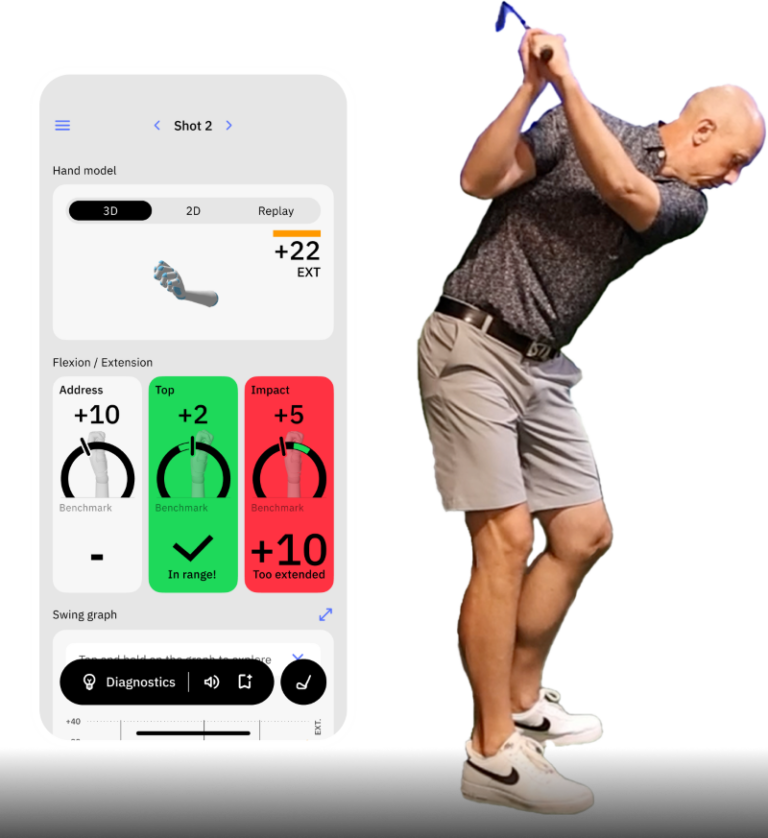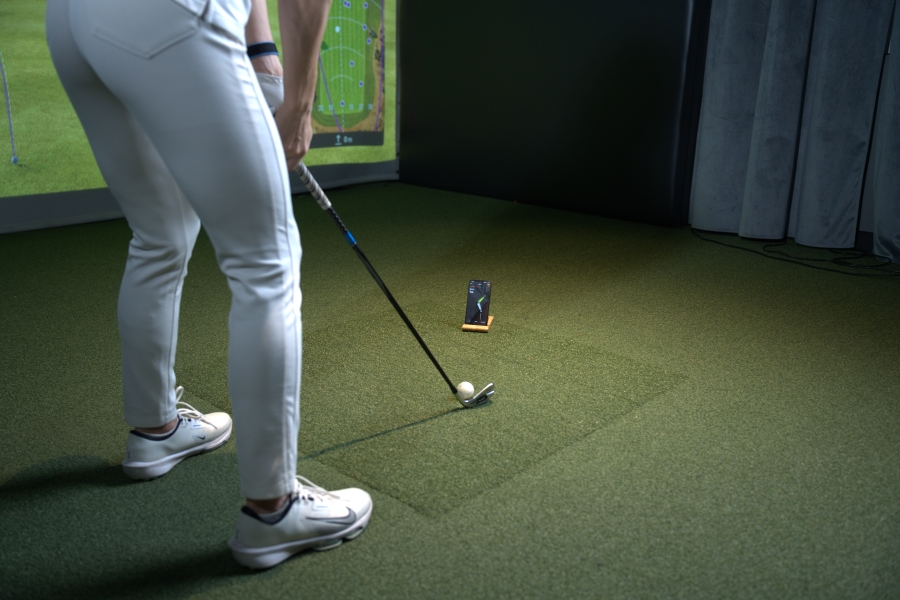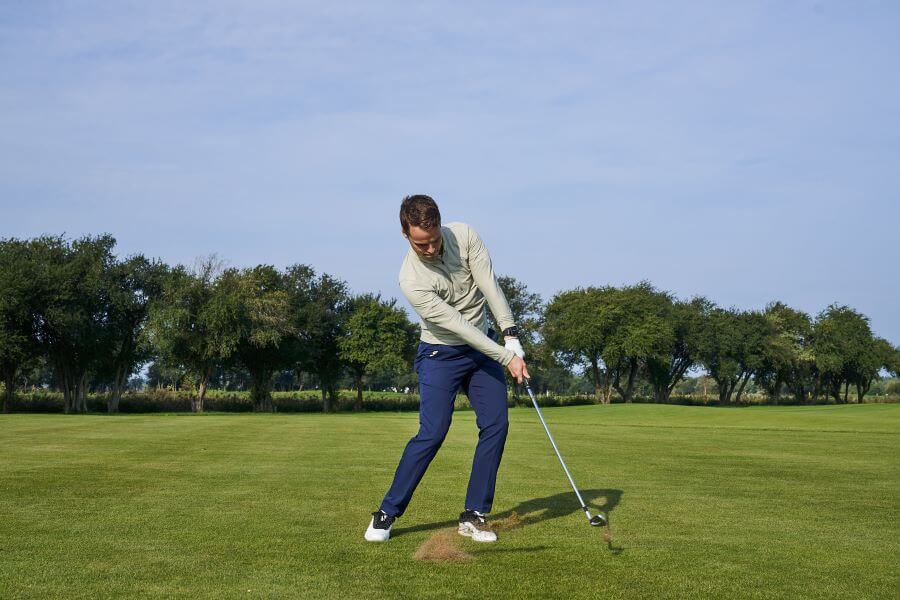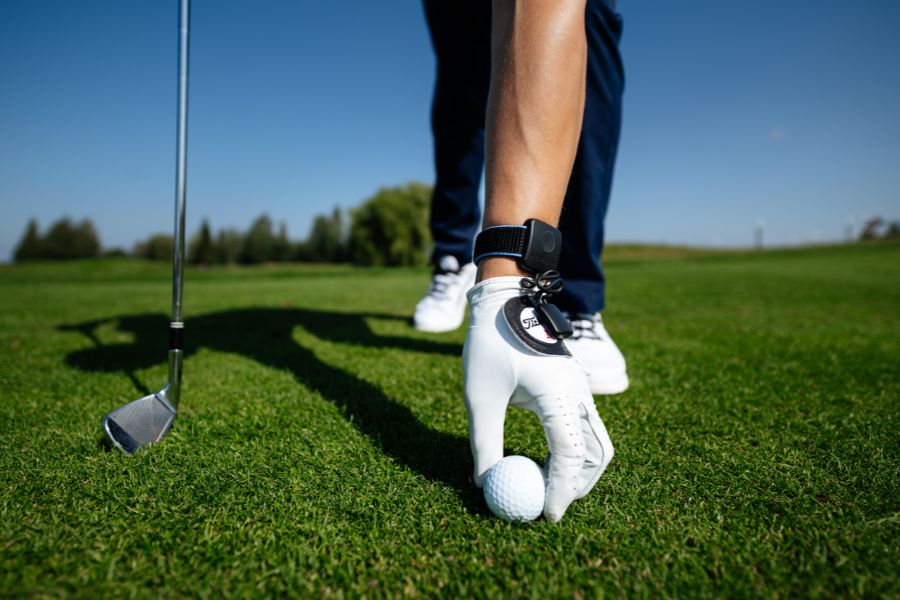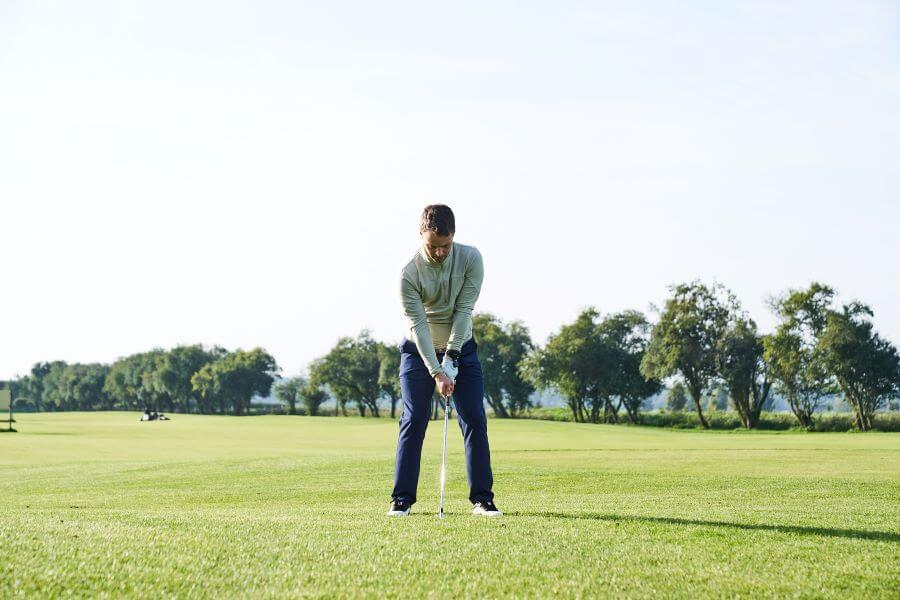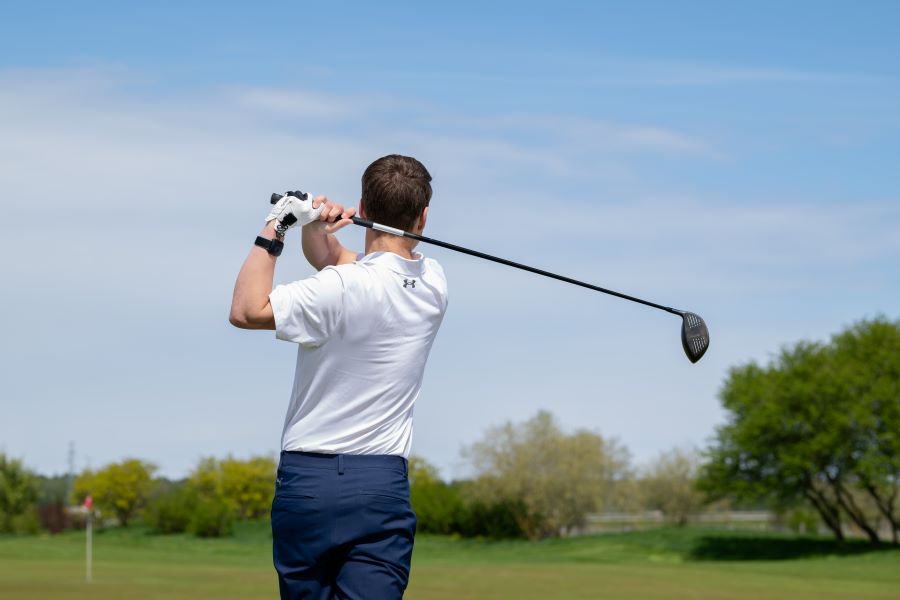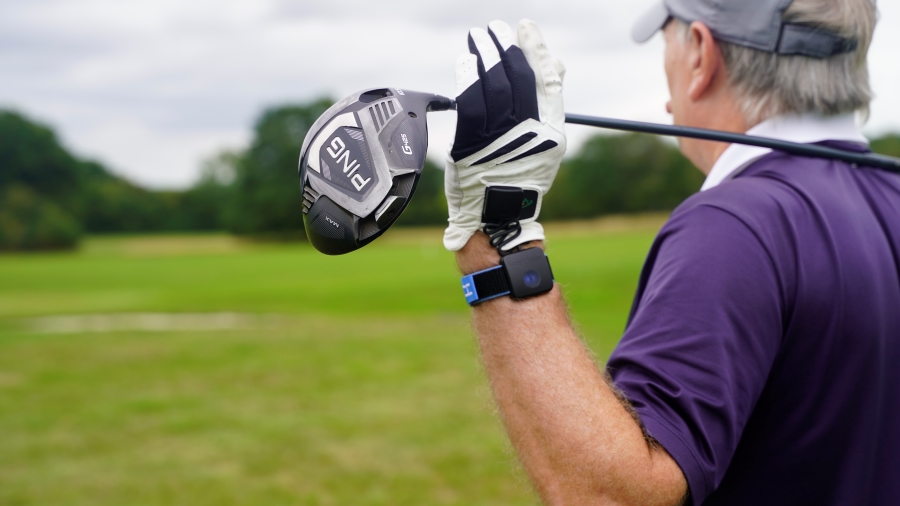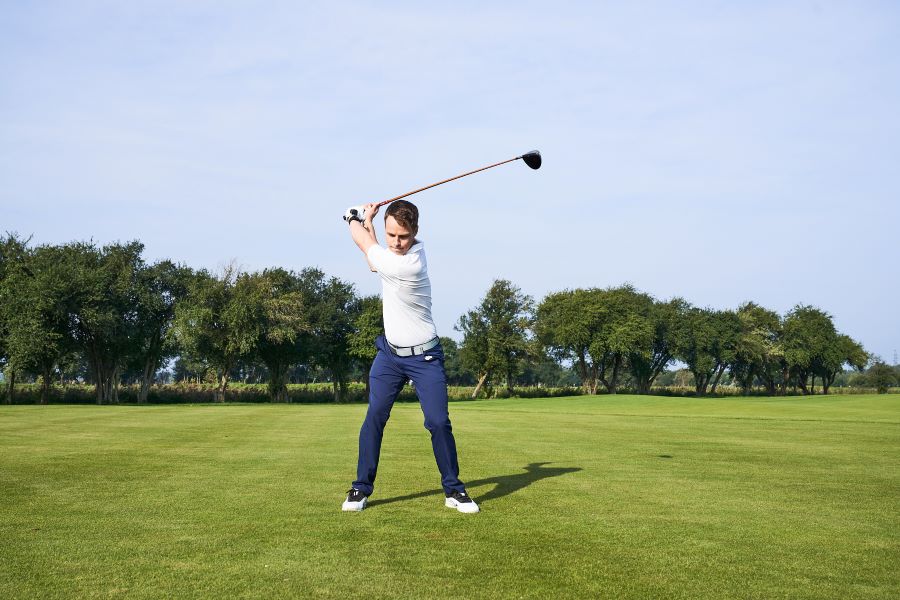Overlapping vs. Interlocking Golf Grip: Pros, Cons & Which One Is Best for Your Game?
The grip is a golfer’s only connection to the club, and choosing the right one can have a major impact on control, consistency, and ball flight.
Many players choose an interlocking grip because it feels more secure, while others prefer the feel and freedom of the overlapping (Vardon) grip.
Each grip style has its strengths, but one is not universally better than the other. What matters most is how the grip fits a golfer’s hand size, comfort level, and swing tendencies.
This guide breaks down the key differences between interlocking and overlapping grips, how to evaluate which one suits your game best, and when it might be time to make a change.
Overlapping vs. Interlocking Grip (Key Takeaways)
Here are the high level takeaways between the overlapping vs. interlocking grip for players who are trying to narrow down which one is best.
- The overlap grip is a great choice for golfers with big hands who tend to grip a golf club with too much pressure.
- Interlocking golf grips can give players more control over the club and improve overall speed.
- The way your hands are positioned on the club directly influences wrist control, which affects clubface angle, timing, and shot consistency.
- Switching from overlapping to interlocking throughout a round is not encouraged; pick a grip and perfect it.
- The grip size on your golf clubs can impact which golf grip is best for your game; get fitted for the correct grips so that you are not making a decision based on the size of your grip.
Contents
Difference Between Overlapping vs. Interlocking Golf Grip
The primary difference between the overlapping and interlocking grips is how the pinky of the trailing hand connects with the lead hand at the back of the grip.
However, because of this connection, there are a few other things that naturally occur within the hands.
Pinky and Forefinger Connection
The overlap grip takes the pinky from the right hand and rests it on top of the forefinger of the left hand (right-handed golfer). With an interlocking grip, the pinky of the right hand and the forefinger of the left hand connect and interlock with each other.
With both the overlapping and interlocking golf grips, the hands are in some way connected and joined together.
With the ten finger golf grip, the hands are just sitting beside each other. In some ways, the overlapping and interlocking are more alike than the ten finger grip is.
Grip Pressure
When you take an interlocking approach to gripping the club, you have all ten fingers connected to the club somehow. Even if your pinky only touches closer to where it joins the palm, it still has some interaction with the club.
For the overlap grip, the pinky of the right-hand does not really come into contact with the club.
With less fingers on the grip, expect lighter grip pressure.
Hand Positioning (Strong vs. Weak)
Some golfers, depending on the size of their hands, have an easier time getting the club into a strong position (to help eliminate a slice) when they have an interlock grip.
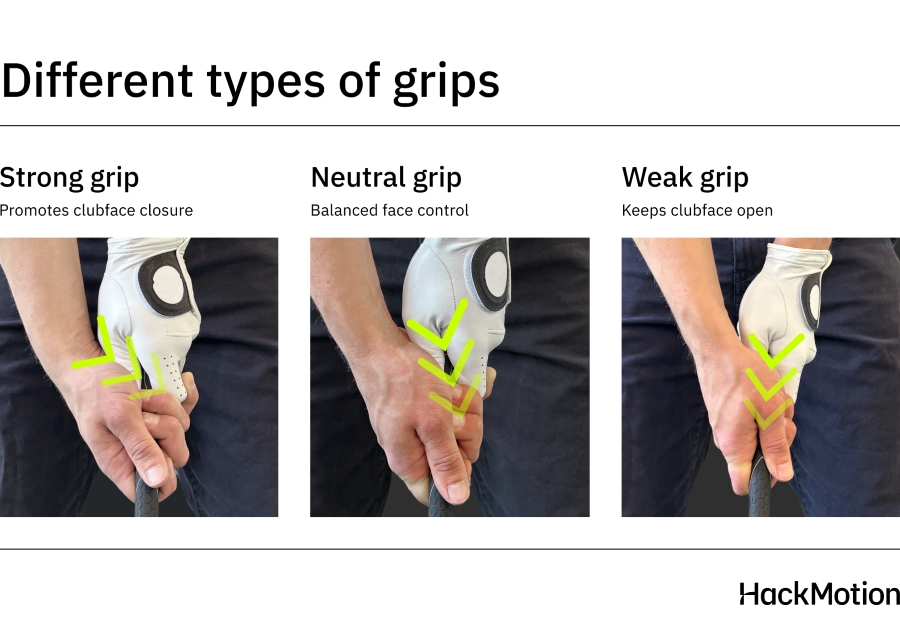
The weaker grip seems to be easier to achieve if you have an overlapping grip.
The hand positioning and strong vs. weak grip often come down to the size of a player’s hand as well.
Pros and Cons of Overlapping Grip
While the overlapping grip is commonly recommended for players with larger hands, some golfers with smaller hands still prefer it for comfort and consistency.
As long as grip size is properly fit, either style can work effectively if it helps square the clubface at impact.”
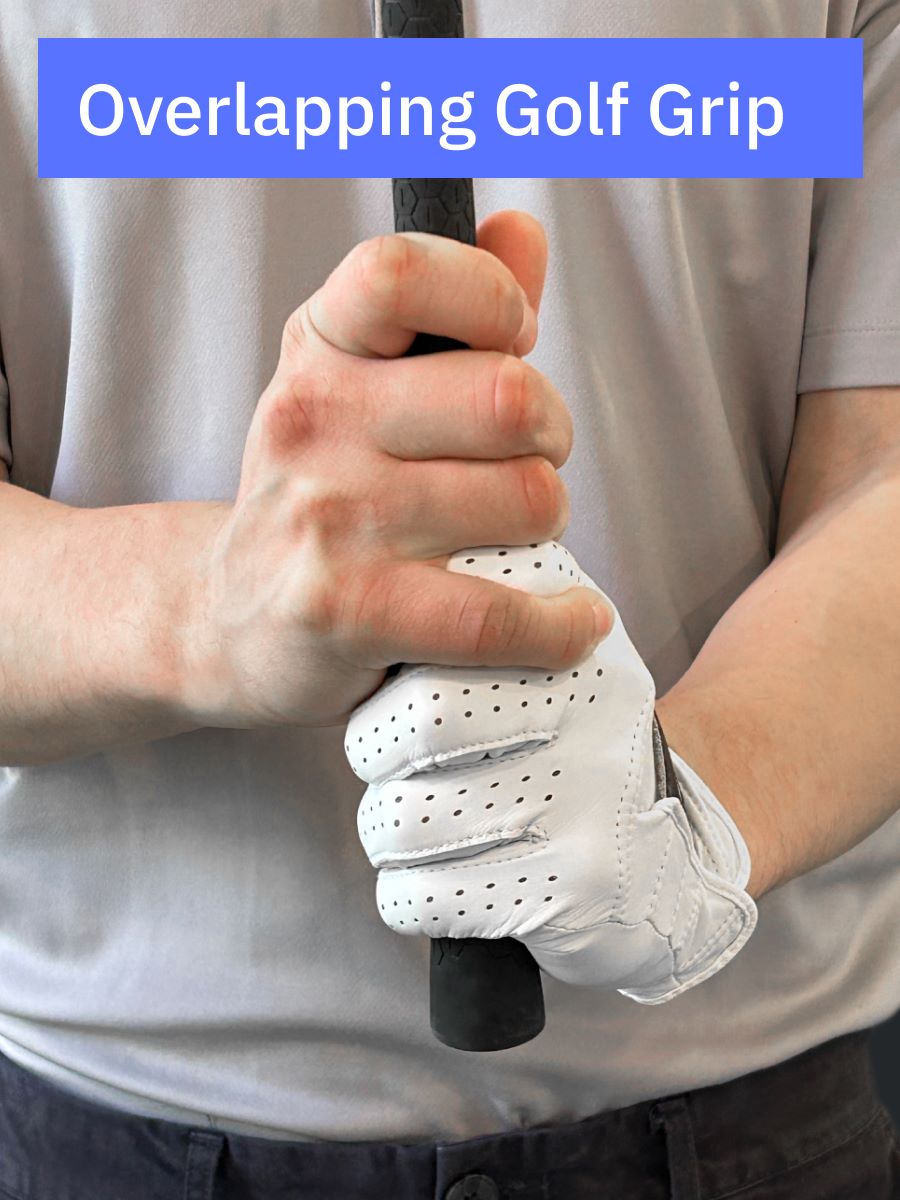
Pros
- It can be a good option for larger hands that feel cramped by having to interlock their fingers.
- Should decrease grip pressure.
- Allows for a natural rotation of hands and forearms with less wrist involvement.
- Commonly used by professional and experienced golfers due to the freedom it provides in the hands.
Cons
- Does not feel as strong.
- Can slow the speed down for some players.
- Can be harder to learn or maintain consistency with for beginners.
Pros and Cons of Interlocking Grip
The interlocking grip tends to be more common. This grip just feels natural and stronger when you first learn it, giving players more confidence early on.
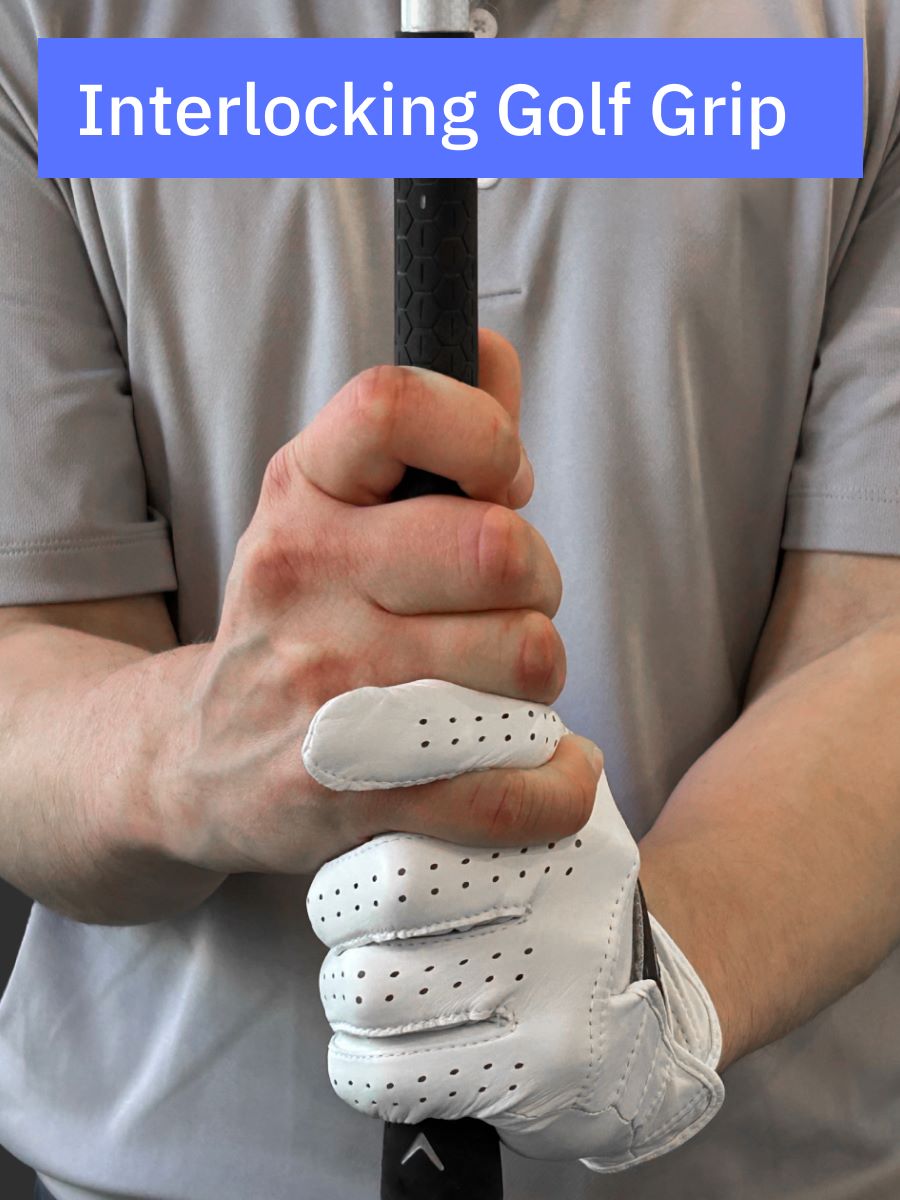
Pros
- Can help to increase swing speed.
- Plenty of control over the clubhead.
- It’s easier for beginners to feel a connected unit between their hands and the club.
Cons
- Causes players to grip the club too hard.
- Sometimes it makes the swing a little more wristy.
- May feel awkward or restrictive for players with larger hands.
Which Grip is Better? Overlap vs. Interlock?
The way you grip the golf club is about performance, feel, and personal preference. To know if interlock or overlap is the best for your game, you have to know what type of player you are and where your game could use a bit of improvement.
Here are some key factors to consider.
Choose an overlapping grip if…
- You tend to grip the club too hard.
- Your hands often sneak into a position on the club where your grip is too strong.
- You get wristy near impact when you hit golf shots.
- Feel in the short game are most important to you in your golf game.
- Your hands are big, and they feel cramped from trying to interlock your fingers.
- You are an experienced player, ready for a change that could result in a better feel.
- You have any pain in your hands due to arthritis
Choose an interlocking grip if…
- You have small hands and need more control of your golf club.
- You often slice the ball.
- You are working on getting more clubhead speed and power.
- You struggle with distance and accuracy off the tee box.
- You are a beginner golfer or junior player.
How to Choose the Best Grip for Your Game?
The choice between overlapping and interlocking grips comes down to personal comfort and performance; there’s no universal best option.
Both styles are used successfully on the PGA Tour, so it’s about finding what fits your swing.
Hand Size
Golfers with smaller hands often benefit from the interlocking grip, which helps create a more secure connection.
Larger hands may feel more comfortable with the overlapping grip—but don’t follow this blindly. Make sure your grip size is properly fitted first.
Hand Strength
Hand strength plays an even bigger role than size. If you struggle to control the club, the interlock may offer more security. If you tend to grip too tightly, the overlap can help reduce tension and promote a smoother release.
Clubface Control
Whichever grip helps you square the clubface more consistently is the right choice. Some players feel better timing and face control with one grip over the other.
HackMotion is a great tool to compare wrist angles and clubface control between grip styles to see what truly works best.
How to Make Sure You Have the Right Grip
Changing your grip is one of the most difficult adjustments to make in golf. If you ask players who have been around the game for a long time, they will tell you that a grip change of any kind feels unnatural and uncomfortable.
If your current grip is limiting your performance, the long-term benefits are often worth the short-term adjustment. Here is how to make sure you have the right grip.
Start with Short Irons
When practicing a new grip, begin with short irons and make half swings. This helps you focus on hand position, pressure, and feel without overcomplicating things.
Be mindful of grip pressure; it’s common to squeeze the club too tightly when adjusting your grip.
Check Accuracy Across the Bag
Once the grip starts to feel more natural, test it across your entire bag. It’s not uncommon for a grip to feel great on short shots but inconsistent with the longer clubs.
The goal is to find a grip that allows you to control the clubface consistently, from wedges to driver. For long-term success, stick with one grip style throughout the set; it’s not worth changing from one club to the next.
Use HackMotion to Test Grip Consistency
You can use HackMotion as a tool for evaluating whether your new grip is producing better wrist mechanics and clubface control.

Here’s how to use it effectively:
- Check Wrist Position at Setup: Grip the club as you normally would with the new grip, then use HackMotion to see your lead wrist angle at address. This creates a baseline to repeat. If you notice large inconsistencies in that wrist angle position it could be related to an inconsistent grip position.
- Measure Clubface Control at Impact: Compare wrist extension/flexion and clubface angles between different grip styles (e.g., overlapping vs. interlocking). HackMotion gives real-time data so you can clearly see which grip leads to a more stable and repeatable impact.
FAQs
Here are a few of the most common questions about overlapping vs. interlocking grips and which is going to be best for your golf game.
What pros use interlocking grips?
Tiger Woods is one of the most well-known players to have used an interlocking grip. His theory was that he would have a lot better connection with the club to increase overall clubhead speed and distance with this interlocking grip in place. Jack Nicklaus and Rory McIlroy also used the interlocking grip.
Can I switch from one grip to another?
It’s fine to make a grip change from one to another, but to change in the middle of a round or have different grips for different clubs probably doesn’t make much sense. There are too many variables in golf, and by continually changing your grip, you add to the number of variables.
Which is the best for putting?
The reverse overlap tends to be the best grip for putting. Reverse overlap grips often help improve overall feel and decrease grip pressure for the average player.
Is overlapping vs. interlocking better for left-handed golfers?
Left-handed golfers can play with overlapping or interlocking golf grips. The left-handed/right-handed differences should not impact the grip that you choose. Phil Mickelson uses the overlapping grip.
What grip should kids start with?
Most kids start with a ten finger grip. However, once their hands are a little stronger and they have some ability, it’s best to switch to an interlocking grip.
What grip is best to fix a slice?
A strong interlocking grip tends to be a good solution for a golfer that is struggling with a slice.
However, if you are making progress on your slice and learning how to square up a clubface, make sure to work back towards a neutral golf grip.
Final Thoughts
A proper golf grip is the only way to become a consistent low-handicap golfer. Without our grip on the club, we aren’t even playing golf!
Take time to learn the proper fundamentals of the grip, and then use HackMotion to develop some consistency in your position.
There are a lot of general assumptions out there about which grip you should be using; make sure that you are overlapping vs. interlocking to ensure you end up with something you feel confident and comfortable with.
